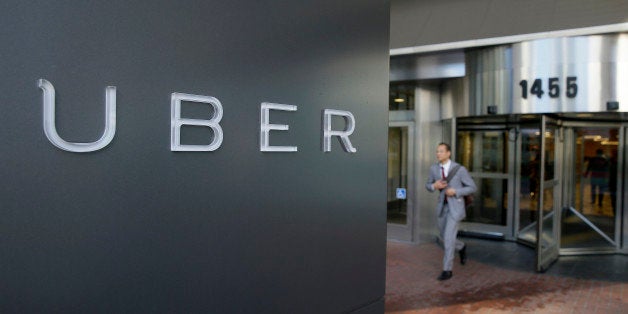
Last week, the U.S. Department of Labor's Wage and Hour Division issued an important Administrator's Interpretation (AI) that provides clear and timely guidance on the question of who is properly considered an "employee" and covered by the Fair Labor Standards Act, and who is not. The AI is a reminder that in today's economy, with many on-demand jobs only available to independent contractor workers, and overnight delivery, janitorial, home care, and cable installation companies basing their business models on calling their workers "independent contractors," these labels don't define the legal status of those workers.
These labels matter, because workers successfully characterized as independent contractors lose out not only on the minimum wage and overtime protections that most workers take for granted, but also on workers compensation, unemployment insurance, the right to collectively bargain and form a union, and other job protections only available to employees. When a worker is treated as a non-employee, competing businesses can be underbid because companies save a lot on payroll and insurance premiums, and governments lose out on taxes.
Here are the top-five notables from the AI:
1. Its title is telling: The Application of the Fair Labor Standards Act's "Suffer or Permit" Standard in the Identification of Employees Who Are Misclassified as Independent Contractors. The Fair Labor Standards Act defines "employ" to "include to suffer or permit to work." Those terms are unique to the FLSA and a handful of other laws, and the Supreme Court has said that the definition sweeps into employment work that would not be considered employment under common law. The definition is unique and really broad, and means that pretty much everyone should be covered under laws with that language.
2. It asks a key question: is the worker genuinely in business for himself or herself? The 15-page AI, one of just a handful issued by the Wage and Hour Division since the Obama Administration took office, traces the judicially-developed multi-factored "economic reality" tests for applying those broad definitions to today's workforce, and then says that the key determination is whether the worker is running her own business. In many cases where companies are calling their workers non-employees, the workers are not running a separate business.
3. It says that labels and titles don't matter. The AI makes clear that the job designation given by a company to a worker is not determinative of the worker's employment status. Even if the worker thinks she's not covered because she was hired as an independent contractor, that doesn't matter. Other labels given to workers recently, including individual janitors being called "franchisees," "freelance" writers, and construction workers required to form a limited-liability company (LLC) in order to get a job, don't rule the status of those workers -- a rigorous application of the test has to follow.
4. It isn't breaking new ground. The AI is a reminder. It describes long-standing and developed case law and DOL interpretations of the 77-year-old "suffer or permit to work" terms, and applies those to more modern examples. Nothing in the AI should be a surprise to labor experts, and if it's a surprise to companies, they've been getting bad advice. Workers, employers, state agencies, and courts should take note that much of the authority for the guidance is long-standing and settled law.
5. It's not rocket science to treat someone like an employee. The FLSA requires the payment of the federal minimum wage (currently $7.25 an hour) and overtime premium pay for any hours worked over 40 in a week. Switching to employee status should not break the bank of the many employers who call their workers independent contractors; companies that hire low-wage janitors, Uber drivers, and home care workers already claim that their workers typically earn more than a $7.25 hourly rate. And really, if an employer cannot or will not pay its employees at least the minimum wage, is that the business model we want in America?
NELP works to stop misclassification of employees as independent contractors and to ensure employer accountability in our economy. For more information, visit www.nelp.org.